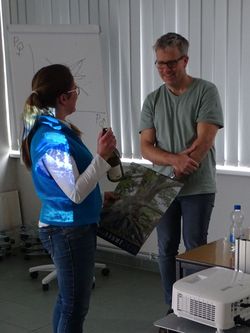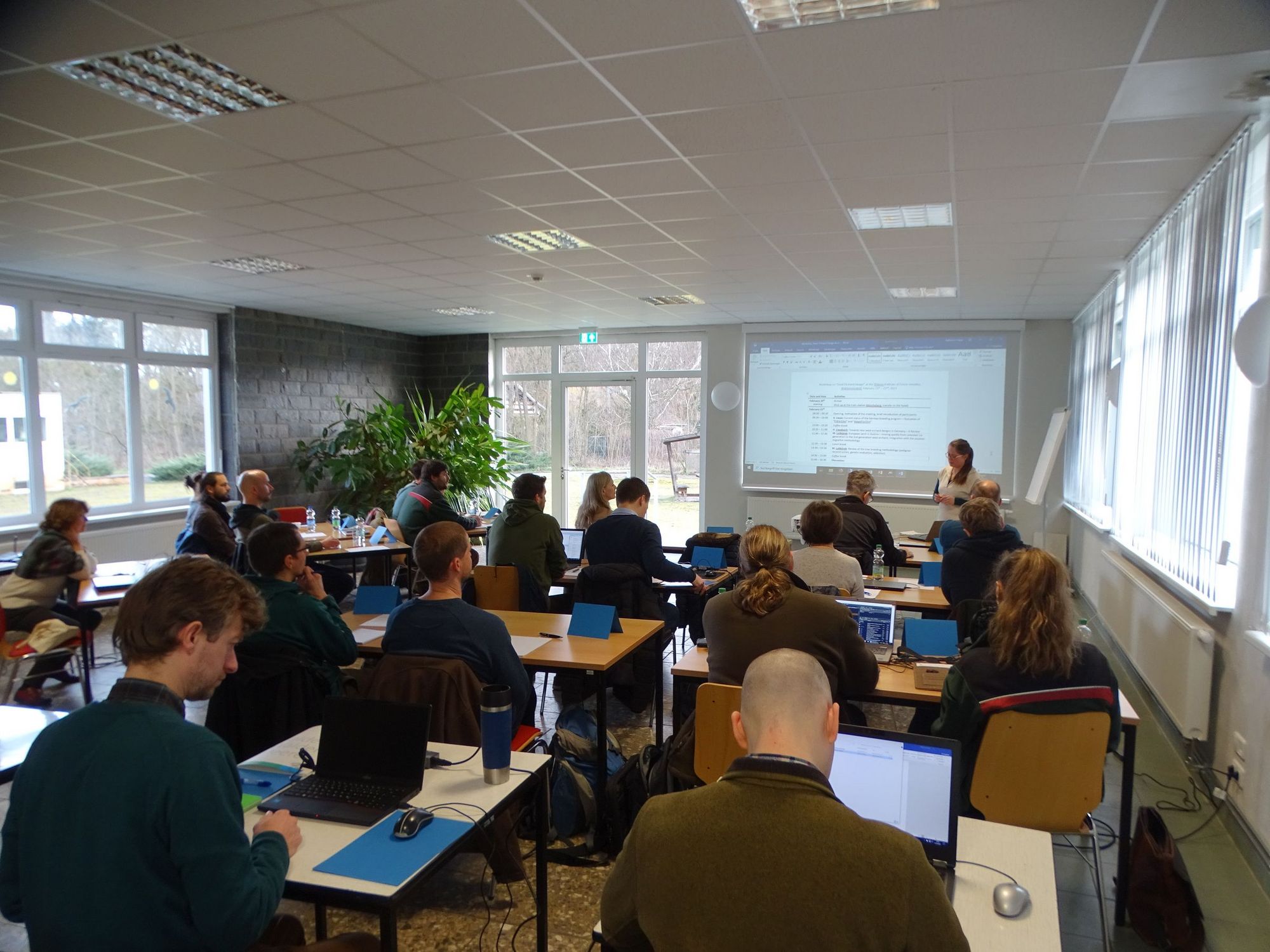Workshop with international guest: New seed orchards for Germany
From 21-22.02.2023 the Workshop Seed Orchard Design took place in Waldsieversdorf, organized by Katharina Liepe, Thünen Institute of Forest Genetics. We were fortunate to welcome Dr. Milan Lstibůrek, Professor of Quantitative Genetics at the Czech University of Life Sciences in Prague, as the keynote speaker. The goal was to disseminate the current international knowledge on the genetic assembly of seed orchards and their spatial design, and to provide highly effective statistic tools to calculate these.
“Forest trees are large, long lived and cover vast ecological regions. In tree breeding a balance needs to be found between the genetic improvement of economically important traits versus the maintenance of a broad genetic diversity, which is guarding against temporal and global environmental contingencies such as climate change.” Dr. Milan Lstibůrek said, who is well known for the concept of “Breeding without Breeding” (El-Kassaby and Lstibůrek, 2009). Hereby, the pedigree of the offspring generation is reconstructed with genetic markers, and by that cost intensive crossing schemes and progeny testing may be circumvented. Impressive evidence for this concept was illustrated for an orchard of European Larch in Austria, where the pedigree was reconstructed for 21 progenies, i.e. planted forest stands, and finally used to identify candidate trees for a second generation seed orchard (Lstibůrek et al., 2020). Milan Lstibůrek has developed various algorithms to calculate the optimal spatial layout for seed orchards, which were applied to specific plans of the participants during the workshop.
At the beginning Katharina Liepe (Thünen FG) summarized the current status of the German breeding program, highlighting the achievements of the projects FitForClim and AdaptForClim. Within these, a great number of plus trees was selected, grafted and secured in breeding populations that form the genetic baseline to establish new seed orchards in Germany, with the first being already under way. Heike Liesebach (Thünen FG) illustrated five important criteria that should be considered when establishing these seed orchards: (1) breeding zones, (2) number of clones, (3) avoidance of inbreeding depression, (4) optimal spatial layouts and the future work necessary to further develop the breeding program. For a detailed description, please refer to Liesebach et al. (2021)
References
El-Kassaby, Y.A., Lstibůrek, M., 2009. Breeding without breeding. Genet. Res. (Camb). 91, 111–120. doi.org/10.1017/S001667230900007X
Liesebach, H., Liepe, K.J., Bäucker, C., 2021. Towards new seed orchard designs in Germany – A review. Silvae Genet. 70, 84–98. doi.org/10.2478/sg-2021-0007
Lstibůrek, M., Schueler, S., El-Kassaby, Y.A., Hodge, G.R., Stejskal, J., Korecký, J., Škorpík, P., Konrad, H., Geburek, T., 2020. In Situ Genetic Evaluation of European Larch Across Climatic Regions Using Marker-Based Pedigree Reconstruction. Front. Genet. 11, 1–8. doi.org/10.3389/fgene.2020.00028

![[Translate to English:] [Translate to English:]](/media/_processed_/f/3/csm_2022_Titelbild_gross2_Saatgut_in_Hand_9ffb8f5748.jpg)
![[Translate to English:] [Translate to English:]](/media/_processed_/f/3/csm_2022_Titelbild_gross2_Saatgut_in_Hand_c17270fcc0.jpg)







